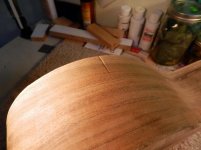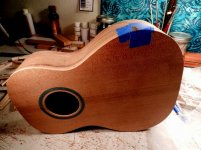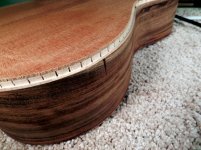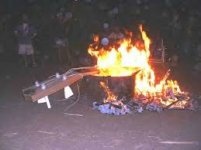sequoia
Well-known member
Sometimes when bad things happen in the uke shop you think, "it ain't that bad. I can fix that", and sometimes you realize, this ain't good. Not good at all. Bad day all around. Was bending binding when my careful perfling delaminated really bad. That is fixable and I can makes things OK, but later I ran into my sides with the band saw cutting away waste and I'm really scrambling to fix this. The gash was about 1mm deep but against the grain. No sanding this baby out. It is scramble and fill and it is gonna show no matter what I do. All you can do is disguise. Sucks. I could feel it wasn't gonna be a good day in the shop. Should have just stopped after the binding and gone crab fishing. Probably would have got skunked.





